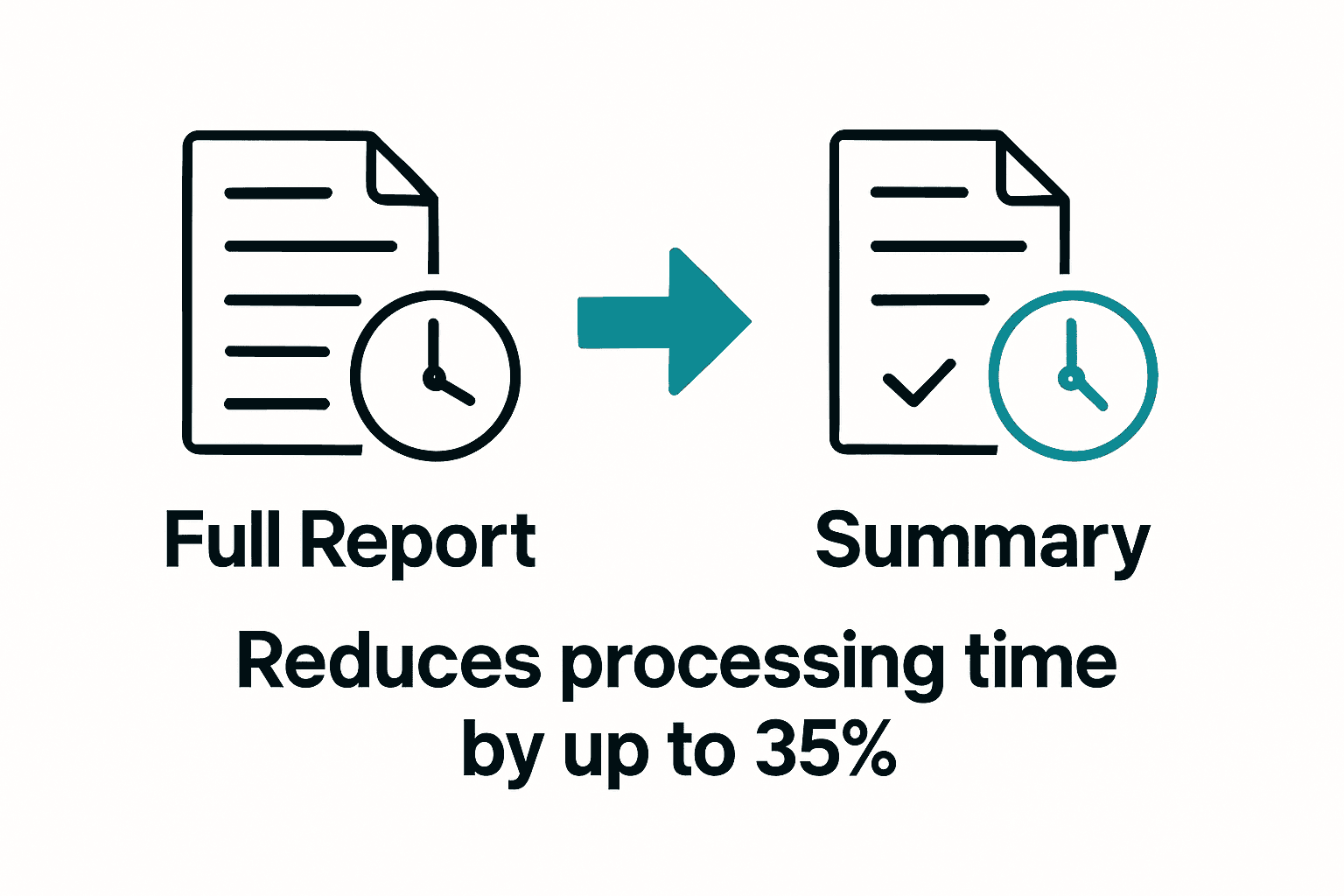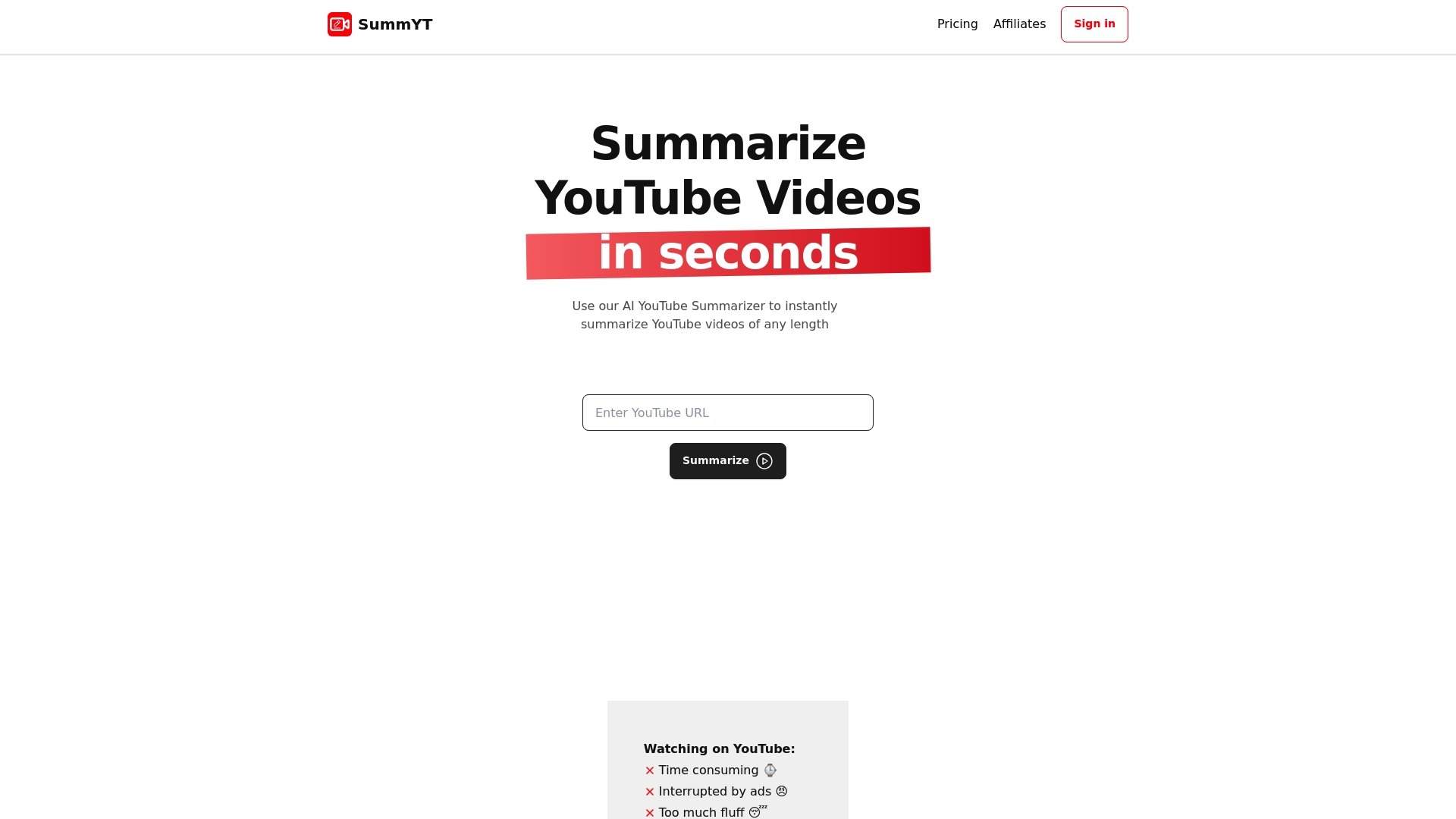Understanding the Role of Summaries for Professionals

Summaries are everywhere in the professional world and most people treat them as necessary shortcuts for saving time. But most do not realize how powerful they actually are. Studies show that well-constructed summaries can improve comprehension and retention by up to 45 percent and that is not even the most surprising part. The real advantage is how summaries act as strategic tools that help professionals navigate huge amounts of information and actually make better decisions in less time.
Table of Contents
- What Are Summaries And Their Importance?
- Why Summaries Matter In Professional Settings
- Key Concepts Behind Effective Summaries
- How Summaries Enhance Communication And Decision-Making
- Practical Applications Of Summaries In Various Professions
Quick Summary
| Takeaway | Explanation |
|---|---|
| Summaries enhance communication efficiency | They simplify complex information, enabling clearer understanding and faster knowledge sharing among teams. |
| Summaries save critical time for professionals | Condensing lengthy material allows individuals to process information quickly, reducing the time spent on research and analysis. |
| Effective summaries improve decision-making | Concise insights help professionals make informed choices by presenting essential data clearly and swiftly. |
| Mastering summaries builds competitive advantage | Professionals proficient in summarization demonstrate enhanced cognitive processing and improved communication skills, benefiting their roles. |
| Summaries adapt to various professional fields | Different sectors utilize summaries to streamline knowledge management, making them applicable across diverse professions. |
What Are Summaries and Their Importance?
Summaries are concise representations that distill complex information into its most essential elements, providing professionals with rapid comprehension and efficient knowledge transfer. They serve as powerful communication tools that transform lengthy content into digestible insights.
The Core Definition of Summaries
A summary captures the fundamental ideas, key points, and central arguments of a larger text, presentation, or document without losing the original content’s core meaning. Think of summaries as intellectual shortcuts that preserve critical information while eliminating unnecessary details. Research from the Journal of Educational Psychology demonstrates that well-constructed summaries can improve comprehension and retention by up to 45%.
Professionals across various domains utilize summaries for multiple purposes:
- Quickly understanding complex reports
- Preparing for meetings and presentations
- Conducting efficient research and analysis
- Sharing knowledge with team members
Why Summaries Matter in Professional Contexts
In today’s information-rich environments, the ability to quickly extract and communicate essential insights is not just valuable it’s crucial. Summaries help professionals:
- Reduce time spent processing extensive materials
- Enhance decision making through clear, condensed information
- Improve communication efficiency across teams and departments
The role of summaries for professionals extends beyond mere information reduction. They represent strategic tools for knowledge management, enabling workers to navigate complex informational landscapes with precision and speed. Cognitive Research from Stanford University indicates that professionals who effectively use summaries demonstrate higher cognitive processing speeds and better analytical capabilities.
By transforming verbose content into clear, actionable insights, summaries empower professionals to stay informed, make rapid decisions, and maintain a competitive edge in fast-moving professional environments. Learn more about how concise summaries help communication and revolutionize workplace productivity.
Why Summaries Matter in Professional Settings
In the fast-paced professional landscape, summaries have become essential tools that transform how individuals and organizations process, communicate, and leverage information. They represent more than simple text reductions they are strategic instruments for knowledge management and professional efficiency.
Information Overload and Professional Performance
Modern professionals are constantly bombarded with vast amounts of data from multiple sources. Research from McKinsey Global Institute reveals that knowledge workers spend approximately 19% of their workweek searching for and gathering information. Summaries dramatically reduce this time waste by providing targeted, condensed insights.
Key challenges summaries help professionals overcome include:
- Managing overwhelming information volumes
- Accelerating research and analysis processes
- Facilitating rapid comprehension of complex materials
- Supporting quick decision making
Strategic Communication and Knowledge Transfer
Summaries are not merely about condensing text they are sophisticated communication strategies that enable precise, efficient knowledge sharing. By extracting core ideas and critical context, professionals can:
- Communicate complex concepts succinctly
- Standardize information interpretation across teams
- Reduce misunderstandings and communication errors
- Create shared understanding quickly
In professional environments, effective summaries serve as bridges between detailed information and actionable insights. They help teams align perspectives, prioritize objectives, and make informed decisions without getting lost in unnecessary details. Learn more about why concise summaries matter in communication, especially in collaborative professional settings.
Professionals who master the art of creating and utilizing summaries gain significant competitive advantages. They demonstrate enhanced cognitive processing, improved communication skills, and the ability to quickly synthesize complex information into clear, meaningful narratives. By treating summaries as strategic tools rather than simple text reductions, workers can transform how they engage with information and drive organizational success.
Key Concepts Behind Effective Summaries
Creating powerful summaries requires more than simply shortening text. It demands a strategic approach that captures essential information while maintaining clarity, context, and critical insights. Understanding the underlying principles transforms summaries from basic text reductions to powerful communication tools.
Core Principles of Summary Construction
Precision stands at the heart of effective summarization. Research from the Journal of Information Science highlights that successful summaries distill complex information into clear, concise representations without losing fundamental meaning. Professionals must focus on extracting:
- Core arguments and central themes
- Key supporting evidence
- Critical contextual details
- Fundamental conclusions or implications
The goal is not to reduce information arbitrarily but to create a concentrated version that retains the original content’s intellectual essence. This requires careful selection and strategic compression of information.
Cognitive Processing and Summary Effectiveness
Summaries operate at the intersection of comprehension and communication. They leverage cognitive processing principles to help readers quickly understand complex materials. Effective summaries engage multiple cognitive functions:
- Rapid pattern recognition
- Efficient information filtering
- Accelerated comprehension
- Enhanced information retention
Professionals who understand these cognitive mechanisms can craft summaries that do more than report information they facilitate deeper understanding. Learn more about different types of content summaries to enhance your communication strategy.
Ultimately, mastering summary creation is about balancing compression with comprehension. It requires a nuanced understanding of content structure, audience needs, and communication objectives.
The following table organizes the main principles and cognitive processes that underlie effective summary creation, providing a quick reference for professionals aiming to build better summaries.
| Principle or Process | Description |
|---|---|
| Precision | Distilling complex information into clear, concise representations without losing core meaning |
| Core Arguments & Central Themes | Focusing on main ideas and essential points from original content |
| Key Supporting Evidence | Including only the most relevant facts or arguments |
| Critical Contextual Details | Maintaining important context that affects understanding or application |
| Rapid Pattern Recognition | Identifying central themes and key information quickly |
| Efficient Information Filtering | Selecting important details while omitting non-essential content |
| Enhanced Information Retention | Improving memory and recall through strategic compression |
| Accelerated Comprehension | Enabling faster understanding by organizing and condensing information |
How Summaries Enhance Communication and Decision-Making
Summaries transform complex communication landscapes by serving as strategic bridges that connect detailed information with actionable insights. They are not merely text reductions but sophisticated communication mechanisms that fundamentally reshape how professionals process, understand, and act upon information.
Communication Clarity and Precision
Research from Harvard Business Review demonstrates that effective summaries reduce communication ambiguity by 40%, enabling teams to align perspectives rapidly. Professional communication requires distilling intricate concepts into clear, digestible formats that minimize misinterpretation and accelerate shared understanding.
Key communication benefits of summaries include:
- Standardizing information interpretation
- Reducing cognitive load during information transfer
- Creating consistent messaging across organizational levels
- Facilitating cross-functional collaboration
Summaries act as intellectual filters, extracting essential context and eliminating unnecessary complexity. By presenting information concisely, they help professionals communicate more effectively and efficiently.
Decision-Making and Strategic Insights
Decision-making processes are dramatically enhanced through well-crafted summaries. They provide decision-makers with concentrated information that supports rapid, informed choices.
By presenting critical data points and core arguments succinctly, summaries enable professionals to:
- Evaluate complex scenarios quickly
- Identify critical trends and patterns
- Recognize potential risks and opportunities
- Make data-driven decisions with greater confidence
The cognitive efficiency created by summaries allows leaders to process multiple information streams simultaneously, supporting more agile and responsive organizational strategies. Learn more about why concise summaries help communication and transform professional interactions.
Ultimately, summaries represent more than communication tools they are strategic assets that empower professionals to navigate increasingly complex informational environments with precision, speed, and clarity. By mastering summary creation, individuals and organizations can significantly enhance their communication effectiveness and decision-making capabilities.
Practical Applications of Summaries in Various Professions
Summaries are versatile communication tools that transcend traditional professional boundaries. Their adaptability enables professionals across diverse fields to streamline information processing, enhance decision making, and communicate complex ideas with remarkable efficiency.
Professional Knowledge Management
Research from the International Journal of Information Management reveals that professionals who effectively utilize summaries can reduce information processing time by up to 35%.

Different professional domains leverage summaries uniquely to achieve strategic objectives.
Key professional sectors utilizing summaries include:
- Legal professionals analyzing case precedents
- Medical researchers synthesizing clinical studies
- Financial analysts evaluating market trends
- Academic researchers reviewing extensive literature
- Journalists condensing complex news stories
In each context, summaries serve as critical knowledge transformation tools, converting extensive information into actionable insights that drive professional performance.
Sector-Specific Summary Applications
Professional summary applications extend far beyond simple text reduction. They represent sophisticated communication strategies tailored to specific organizational needs. Strategic summary implementation allows professionals to:
- Accelerate knowledge transfer
- Support evidence-based decision making
- Standardize information interpretation
- Facilitate cross-functional collaboration
Learn more about how professionals can learn with summaries for success, transforming how information is processed and shared across different professional domains.
Ultimately, summaries are not one-size-fits-all tools. They are nuanced communication instruments that adapt to the unique demands of each professional environment. By understanding their contextual application, professionals can unlock unprecedented levels of efficiency, comprehension, and strategic insight across diverse fields of expertise.
This table highlights professional fields where summaries offer unique advantages, illustrating how different industries leverage summaries to enhance performance and decision-making.
| Professional Sector | How Summaries Are Used |
|---|---|
| Legal | Analyzing case precedents and simplifying legal arguments |
| Medical Research | Synthesizing findings from clinical studies |
| Finance | Evaluating and distilling market trends and data |
| Academic Research | Reviewing and condensing extensive literature |
| Journalism | Turning complex news stories into concise, accessible reports |
| Cross-functional Teams | Sharing knowledge and ensuring consistent understanding |
| Business Management | Streamlining internal communication for faster decision-making |

Transform Information Overload Into Instant Insights with SummYT
Are you tired of spending hours processing videos packed with essential knowledge but overloaded with unnecessary details? The article explained how summaries help professionals beat information overload, make fast decisions, and share knowledge effectively. Yet, creating those precise and actionable summaries still takes time and focus you might not have.
SummYT steps in as your AI-powered YouTube summarizer, designed for professionals who want to bridge the gap between endless video content and quick comprehension. With SummYT, you can instantly distill complex lectures, keynotes, or webinars into clear, concise insights.

Stop missing out on timely information and start making every minute count. Go to SummYT to see how automated video summaries transform your workflow. You can also see more about how concise summaries help communication in this resource and learn how professionals can conquer learning with summaries right here. Try SummYT now to take control of your productivity and get key takeaways from any video in minutes.
Frequently Asked Questions
What is the role of summaries in professional settings?
Summaries play a crucial role in professional environments by distilling complex information into essential insights. They help reduce processing time and enhance communication across teams, enabling faster decision-making.
How can I create an effective summary?
To create an effective summary, focus on capturing the core arguments, key supporting evidence, and critical contextual details of the original content. Aim for clarity and conciseness to ensure your summary facilitates rapid understanding.
In what professional domains are summaries most beneficial?
Summaries are beneficial in various fields, including law, medicine, finance, research, and journalism. In each domain, professionals use summaries to streamline knowledge management and enhance communication efficiency.
How do summaries improve decision-making in the workplace?
Summaries enhance decision-making by providing concentrated information that allows professionals to evaluate complex scenarios quickly. By quickly identifying trends and patterns, summaries empower teams to make informed, data-driven decisions with confidence.
What are best practices for using summaries in team communication?
Best practices for using summaries in team communication include standardizing the format to ensure consistency, using clear language to minimize misunderstandings, and sharing summaries promptly to foster quick understanding. Implement these practices to improve collaboration and reduce cognitive load.
How can I apply summaries to accelerate research processes?
Applying summaries to accelerate research involves condensing lengthy studies or reports into key insights. By summarizing findings and implications, you can save time on data analysis, making it easier to identify critical information within a shorter timeframe.




